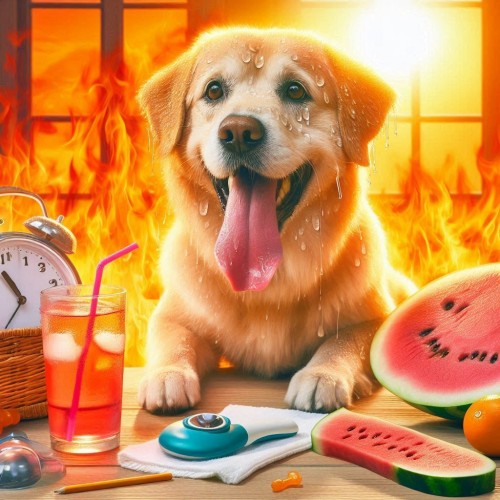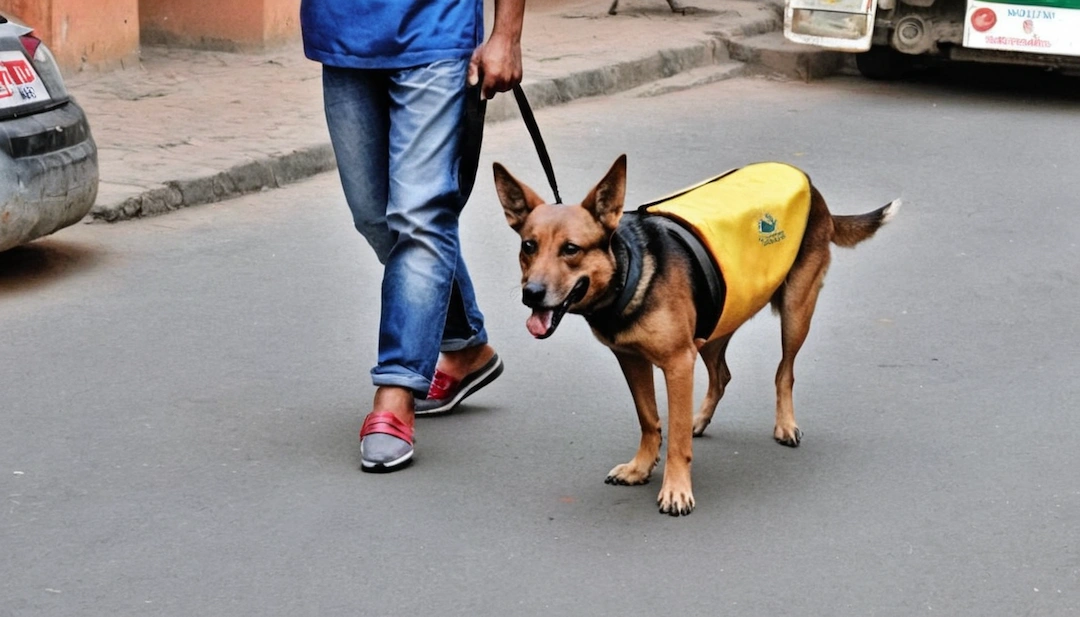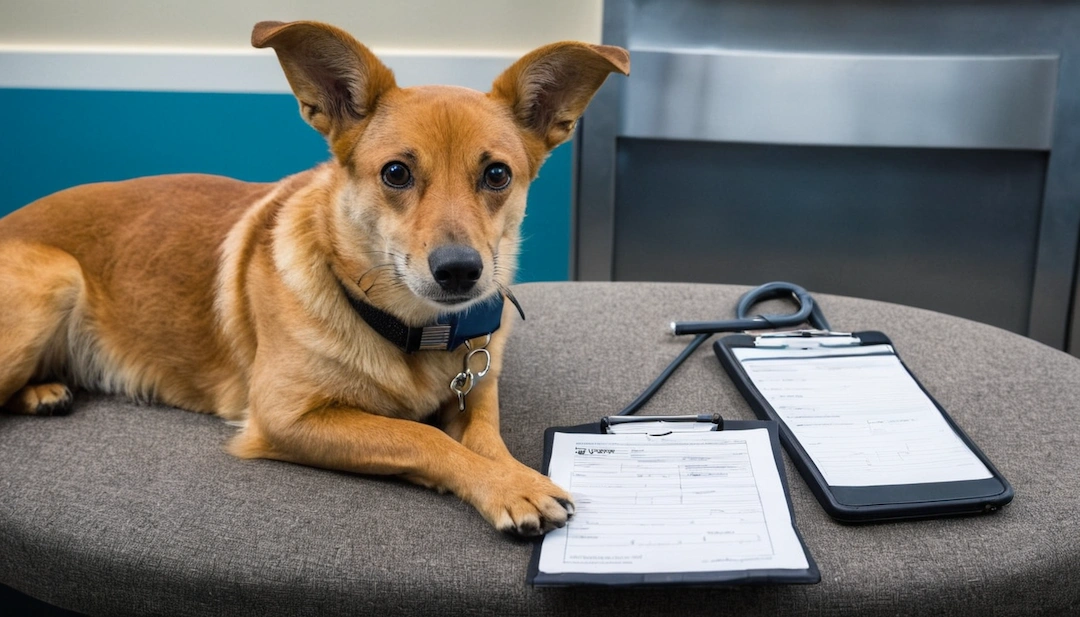Heat Stroke in Pets: 6 Critical Warning Signs and Effective Remedies
21 Jun 2024
Heat Stroke in Pets: 6 Critical Warning Signs and Effective Remedies
The risk of heat stroke in pets increases dramatically, as summer temperatures soar. Understanding the warning signs of overheating in pets and knowing how to respond can save your furry friend’s life. This comprehensive guide highlights six critical symptoms of heat stroke in pets and provides practical steps to handle such emergencies.
Recognizing the Symptoms of Heat Stroke in Pets
Heat stroke in pets is a severe condition that demands immediate attention. Here are six warning signs to watch for:
1. Excessive Panting and Drooling
One of the earliest and most noticeable signs of heat stroke in pets is excessive panting and drooling. Dogs, in particular, regulate their body temperature through panting. When they can't cool down, their panting becomes more intense and accompanied by thick, sticky saliva.
2. Lethargy and Weakness
A pet suffering from heat stroke will often appear lethargic and weak. They may lie down more than usual, show reluctance to move, and display a general lack of energy. This exhaustion results from the body’s struggle to cope with the excessive heat.
3. Rapid Heartbeat
Heat stroke can cause your pet’s heart rate to spike as the body attempts to cool itself. This rapid heartbeat, often noticeable through the chest, is a critical sign that your pet is in distress and needs immediate cooling measures.
4. Vomiting and Diarrhea
Heat stroke often leads to gastrointestinal distress in pets, resulting in vomiting and diarrhea. These symptoms can exacerbate dehydration, making the condition even more dangerous.
5. Bright Red or Pale Gums
Checking your pet’s gums can offer insight into their health status. Bright red gums often indicate overheating, while pale or blue-tinged gums can signal oxygen deprivation, both of which require urgent veterinary attention.
6. Collapse or Seizures
In severe cases, heat stroke can cause pets to collapse or have seizures. These symptoms indicate a critical situation where immediate veterinary intervention is necessary to prevent permanent damage or death.
ALSO READ | Protect Your Dog from Fleas and Ticks: A Comprehensive Guide
Immediate Actions to Take for Overheated Pets
If you notice any of these symptoms, acting quickly is crucial. Here’s what you should do:
1. Move to a Cool Environment
Immediately move your pet to a shaded or air-conditioned area. Reducing their exposure to heat is the first step in preventing further overheating.
2. Offer Water
Provide cool, fresh water for your pet to drink. Avoid forcing them to drink, but encourage small sips to help with hydration.
3. Apply Cool Water
Use cool (not cold) water to wet your pet’s fur, focusing on their belly, paws, and armpits. You can also use a damp cloth or towel. Never use ice-cold water, as it can cause shock.
4. Use Fans
Placing your pet near a fan can help evaporate the water on their fur, speeding up the cooling process.
5. Monitor Temperature
If possible, use a rectal thermometer to monitor your pet’s temperature. The goal is to reduce their body temperature to a safe range, typically around 103°F (39.4°C). Once their temperature starts to drop, continue to monitor them closely.
6. Seek Veterinary Care
Even if your pet seems to recover, it’s essential to seek veterinary care immediately. Heat stroke can cause internal damage that isn’t immediately visible, and a vet can provide necessary treatments such as IV fluids and medications.
ALSO READ | Brave Pet Dog Saves Visually Impaired Owner from Deadly Cobra Attack
Preventing Heat Stroke in Pets
Prevention is always better than cure. Here are some tips to keep your pets safe from heat stroke:
1. Avoid Peak Heat Hours
Limit your pet’s outdoor activities during the hottest parts of the day, typically between 10 AM and 4 PM. Opt for early morning or late evening walks.
2. Provide Ample Water and Shade
Ensure your pets always have access to fresh water and shaded areas when outside. Consider investing in cooling mats or vests for extra protection.
3. Never Leave Pets in Cars
Never leave your pet in a parked car, even for a short period. Temperatures inside a vehicle can rise rapidly, leading to fatal heat stroke.
ALSO READ | Pet Health Concerns Surge in Kolkata Due to Pre-Monsoon Weather
4. Monitor High-Risk Pets
Certain pets are more susceptible to heat stroke, including brachycephalic breeds (like Bulldogs and Pugs), elderly pets, and those with health conditions. Keep a close eye on these high-risk pets during hot weather.
Conclusion
Heat stroke is a preventable yet potentially fatal condition that can affect any pet. By recognizing the warning signs and knowing how to respond, you can protect your furry friends from the dangers of overheating. Always stay vigilant, provide a cool environment, and seek immediate veterinary care if needed to ensure your pet's safety and well-being during the hot summer months.
Related Posts
Social media
Category
Trending Posts
-

Isha Ambani and Anand Piramal's Daughter Aadiya Shakti with Her Beloved Pet Dog
15 Jul 2024 -

Keeping Pets Cool and Safe Amid Power Outages
11 Jul 2024 -

Ratan Tata Launches Tata Trusts' Small Animal Hospital in Mumbai
04 Jul 2024 -

Tragic Rabies Deaths: Man and Son Succumb After Dog Bite in Visakhapatnam
27 Jun 2024 -

Pet Dog Bites Delivery Man in Ludhiana: A Growing Concern for Safety
24 Jun 2024 -

The Rising Cost of Veterinary Care: How to Manage Pet Medical Bills
23 Jun 2024 -

Kartik Aaryan Trains His Dog for Katori Champion Title
22 Jun 2024
Subscribe Newsletter
It is a long established fact that a reader will be distracted.


